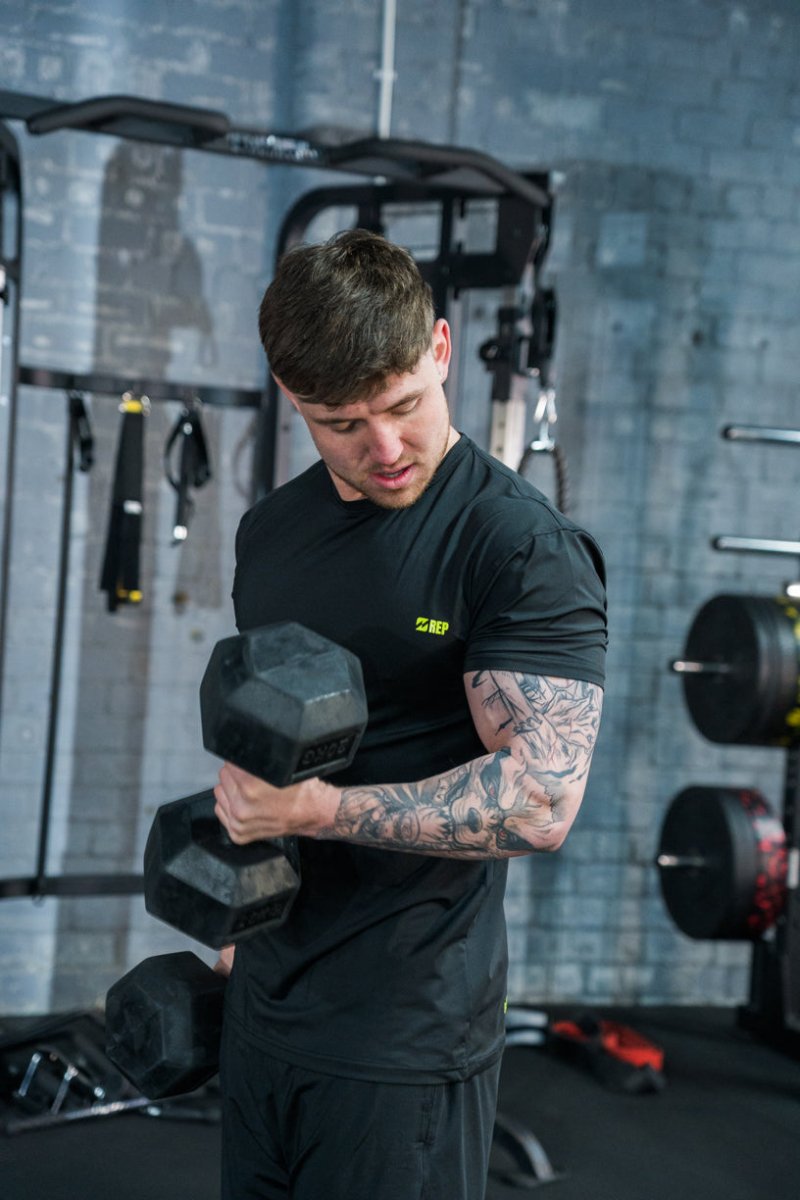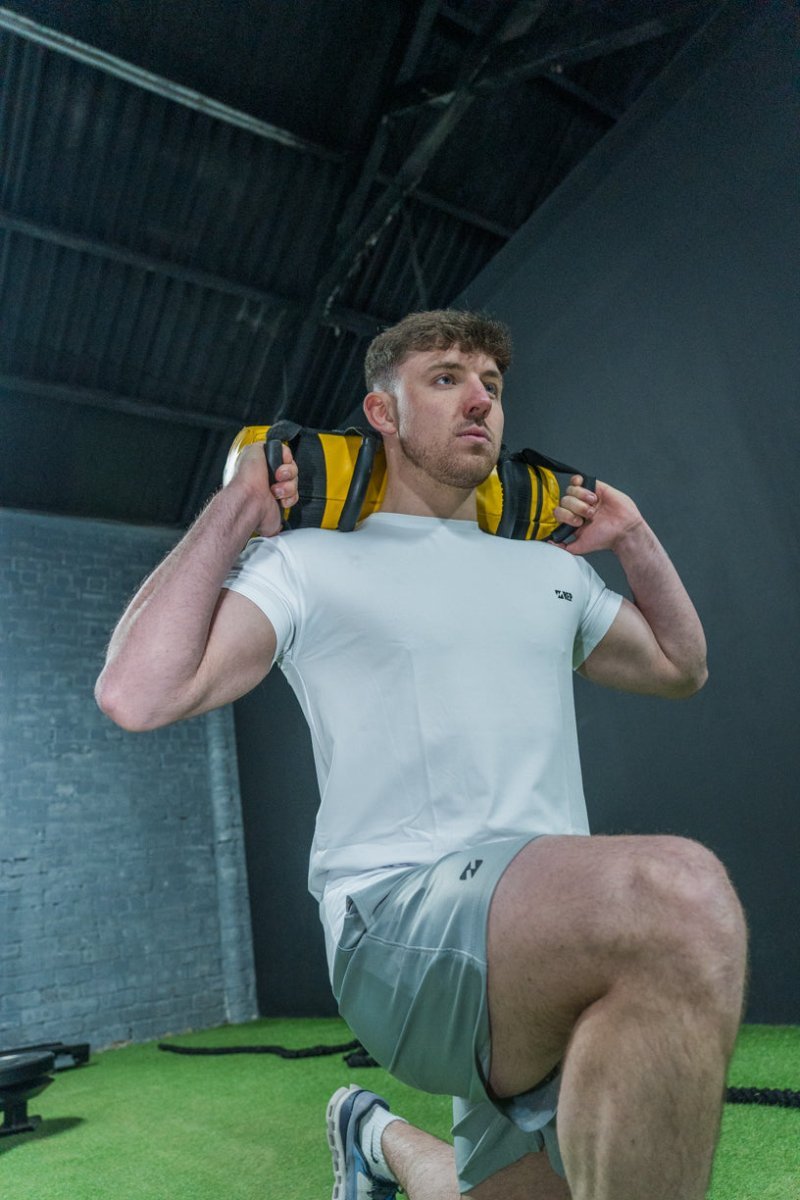
Bicep And Tricep Workout [2025 Guide]
Training your arms is more than just a chase for bigger guns. For many in the gym community, targeting both the biceps and triceps boosts upper body strength, improves muscle definition, and supports everyday movements. Whether your aim is to maximise your lifts, enhance muscle symmetry, or simply feel confident in your fitted tee, a solid bicep and tricep workout pays off.
Both muscles play different but essential roles. The biceps handle pulling and curling, powering movements like pulling up or carrying heavy shopping bags. The triceps dominate during pushing actions — think pressing open heavy doors or bench pressing. A balanced approach means stronger arms, improved lifting performance, and reduced risk of injury during compound gym movements.
You’ll benefit not only aesthetically, but also functionally. Plus, working arms gives satisfying pump and progress you can notice week by week. If you’re serious about getting stronger, don’t leave your biceps and triceps to chance. Let’s break down how to structure an ideal bicep and tricep workout to get you closer to your goals.
Key Principles for Effective Bicep and Tricep Workouts
A smart approach to bicep and tricep workout planning focuses on muscle recruitment, progressive overload, and sufficient recovery. The key is to alternate between compound and isolation exercises. Compound lifts like chin-ups or close-grip bench press activate both the primary and secondary arm muscles, laying the foundation for strength. Isolation exercises like bicep curls or tricep rope pushdowns pinpoint muscle groups for focused growth and definition.

It’s important to train each muscle group with enough frequency and variety to drive adaptation. Aim to hit both muscles about twice per week, allowing at least 48 hours between intensive sessions for recovery. For most gym-goers in the UK, three or four sets of 8–15 reps per exercise balances strength and hypertrophy (muscle size) best. Prioritise full range of motion, slow and controlled reps, and strict technique over chasing heavier weights.
As you select exercises for your biceps and triceps workout, switch up the grip (supinated, pronated, neutral), angle, and kit (dumbbells, barbells, cables, resistance bands) to challenge your muscles from different directions. Simple changes in elbow position or grip can shift muscle recruitment, helping break plateaus and encourage balanced growth.
Hydration, adequate protein intake, and rest are as vital as your sets and reps. The British Nutrition Foundation recommends pairing your training efforts with healthy, balanced meals, which will support muscle repair and growth. Listen to your body — if you feel joint pain or persistent fatigue, pull back and adjust your training volume.
Complete Bicep and Tricep Workout Structure
For best results, start with a five-minute upper body warm-up. Arm circles, banded pull-aparts, and push-ups elevate your heart rate and stimulate the elbow and shoulder joints. Jumping straight into heavy curls or extensions without warming up increases your injury risk.
Here’s an ideal session structure, suitable for beginners to intermediates. Aim for this full circuit or select two or three exercises from each muscle group to supplement your regular training plan. Remember to rest for 60–90 seconds between sets to maintain intensity and proper form.
- Barbell Bicep Curl: One of the most effective biceo and tricep workouts starts with the basics. Stand with a shoulder-width grip, curl the bar to shoulder height, and lower with control. This exercise focuses on the biceps brachii and forearms, building a base of strength.
- EZ Bar Skullcrusher: Lying on a flat bench, lower the bar towards your forehead with elbows tucked, then press back up. This hits the long head of the triceps, boosting pushing power.
- Dumbbell Hammer Curl: Hold the dbs with a neutral grip (palms facing in) and curl. Targeting the brachialis, this variation thickens your arms and supports elbow stability.
- Tricep Rope Pushdown: Using a cable machine, pull the rope handles down and outward, fully extending at the bottom to activate all three triceps heads.
- Incline Dumbbell Curl: Recline on a bench set to a slight incline, holding dumbbells with arms straight down. Curl up without swinging. This stretch position intensifies biceps engagement.
- Overhead Tricep Extension: Stand or sit, holding a dumbbell above your head with both hands, elbows locked close to your ears. Lower the weight behind your head, then press up. Excellent for hitting the long head of the triceps.
- Chin-Up (Underhand Grip): Grab a pull-up bar with palms facing you, pull your chin over the bar, and lower slowly. This compound exercise stimulates the biceps as well as the upper back.
- Dips: Either using parallel bars or a bench, lower your body until elbows are at 90 degrees and press up. Leaning slightly forwards targets the chest and shoulders, but staying upright isolates the triceps.
Mix and match these exercises to bring variety to each biceps and triceps workout. Focus on controlled contractions, slow negatives, and hitting muscular failure on the final set. For more guided routines, check out the beginner gym workout guide for structured programming advice.
Common Mistakes in Arm Training and How to Avoid Them
A bicep and tricep workout only delivers results if you keep the fundamentals right. Many individuals focus on lifting heavier weights at the expense of strict form, which sacrifices muscle tension and can risk injury. Always prioritise a smooth, full range of motion on curls and extensions, ensuring the joints are controlled from start to finish.
Training arms daily is another frequent pitfall. Muscles grow during rest, not while you’re hammering out rep after rep. Excessive training leads to overuse injuries, tendon pain, or plateaus. Schedule arm workouts with at least forty-eight hours between intense sessions, and incorporate movements for other upper body muscles to maintain balanced development.

Neglecting compound movements is also common. While direct curls and pushdowns are essential for muscle engagement, integrating compound lifts like chin-ups and close-grip bench presses ensures all heads of the muscles are recruited and stimulated. Compound moves also mirror functional, real-life activities, carrying over into better performance outside the gym.
Poor mind-muscle connection is often overlooked. To remedy this, focus on slow negatives and deliberate contraction at the peak of each rep. If you can’t maintain control, reduce the resistance. Range of motion and muscular tension matter more than the number on the dumbbell.
Finally, don’t skimp on nutrition or hydration. Recovery relies on protein intake, as highlighted by the British Nutrition Foundation. Make sure to hydrate, sleep well, and eat protein-rich meals after each session for optimal muscle repair and growth.
Optimising Your Arm Training: Tips for Progress and Motivation
Variety is key for long-term progress in any bicep and tricep workout routine. Change your exercises every four to six weeks to challenge new muscle fibres and prevent boredom. Swap dumbbells for cables, change grip widths, or adjust rep schemes to keep things fresh and effective.
Tracking your workouts is a fundamental habit. Keep a logbook or use a fitness app to note sets, reps, and the weights used. Progressive overload — increasing volume, reps, or resistance over time — is your ticket to continuous gains. Even small jumps in weight or reps matter for both strength and size.
Don’t forget about the importance of core and back training for overall upper body development. Compound exercises like pull-ups or rows carry over to arm capacity and resilience. Explore more back and biceps workout exercises for a well-rounded approach.
Consistency beats intensity every day. Showing up for every scheduled session ensures you build muscle memory, nail your form, and see sustainable results. If you’re unsure where to begin, or want options tailored for all experience levels, dive into the upper body weight exercises guide — these moves aren’t just for women but for anyone seeking diverse options.
Motivation ebbs and flows, but setting small, clear goals works wonders. Whether that’s achieving your first bodyweight chin-up or adding a few reps to your tricep dips, ticking off milestones builds confidence and keeps you coming back. Share your lifts with mates, join fitness forums, or connect with others in your gym to stay accountable and inspired.
Remember, the science around muscle growth and effective bicep and tricep workout techniques is always evolving. Stay curious, be willing to adjust, and focus on enjoying the workout process. For more tips on smashing your arm training and full-body results, read more on the REP blog.
Bicep And Tricep Workout: FAQ's
1. How often should I train biceps and triceps each week?
Training arms twice a week is ideal for most people. This allows enough volume for growth while giving your muscles 48+ hours to recover between sessions.
2. Can I train biceps and triceps on the same day?
Yes, pairing biceps and triceps in one workout is common and effective. It saves time and lets you fully target both pushing and pulling muscles in the arms.
3. What rep range works best for building arm muscle?
For balanced size and strength, aim for 8–15 reps per set. Lower reps with heavier weights build strength, while higher reps support hypertrophy and endurance.
4. Should I use dumbbells, cables, or barbells for arm workouts?
Each has its benefits—dumbbells help with balance and range, cables offer constant tension, and barbells allow heavier lifts. Mixing all three keeps workouts effective and prevents plateaus.
5. Do I need both compound and isolation exercises for arms?
Yes—compound moves like chin-ups and close-grip bench presses build strength, while curls and pushdowns target specific muscles for shape and definition. A mix gives the best results.

![Kettlebell Glute Workout [2025 Guide]](http://repworld.co.uk/cdn/shop/articles/kettlebell-glute-workout-2025-guide-820838.jpg?v=1749559119&width=800)
